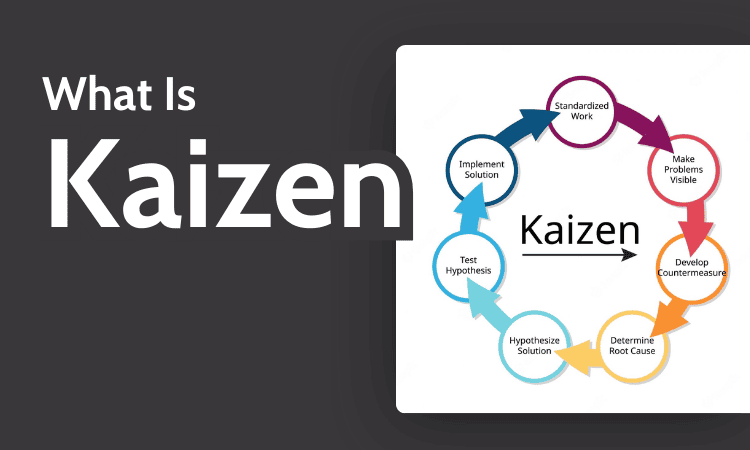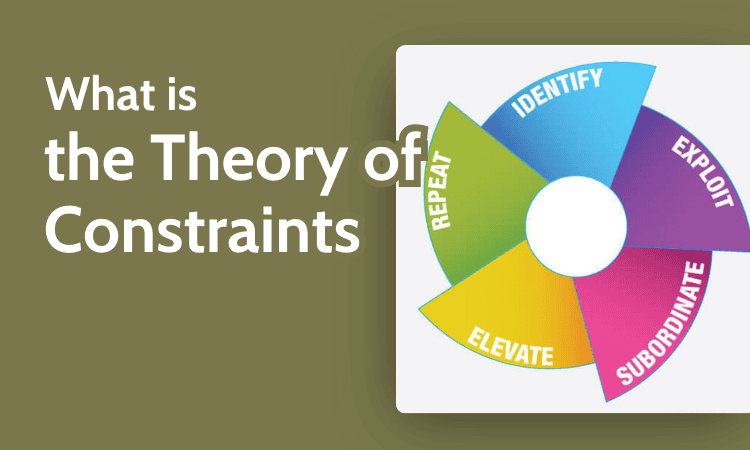
New project managers often ask, “What is a project charter?” It’s important to know the answer as it’s the starting point for your project. In this article, we’ll answer this question and show you how to make a solid project charter.
Written by Dan Ginn ( Writer, Script Editor )
Facts checked by Igor Kurtz ( Fact-checking editor )
Last Updated: 25 Jul'24 2024-07-25T21:32:32+00:00
All our content is written fully by humans; we do not publish AI writing. Learn more here.
Key Takeaways: What Is a Project Charter?Facts & Expert Analysis About Project Charter Meaning and Purpose:
While the best project management software can help with a project’s day-to-day management, a project charter serves as the starting point of its success. If you’re not sure what project charters are and what role they play in a project timeline, don’t worry — we’ll explain it all in our “what is a project charter” guide.
Beyond defining what a project charter is, we’ll also show you the best practices to create and implement one to give your project the best chance of success. We’ll also explain all the elements that go into a project charter document and outline how it can help you achieve your goals.
Meet the expertsDan Ginn ( Writer, Script Editor )
Dan Ginn is a seasoned tech writer focusing on project management software and cloud storage integration. His seven-year tenure as a full-time freelance writer, featuring in prominent tech outlets like Digital Trends and TechRadar, highlights his adeptness in Agile methodology, task coordination and team collaboration. His insights often delve into time management, resource allocation and project planning, reflecting a profound grasp of digital technology trends. Dan’s expertise extends to risk management, employing the Scrum framework and leveraging performance metrics for effective project tracking.
Brett Day ( Writer, Editor )
Brett Day is an accomplished project management expert, with over a decade of experience in retail management, leading projects for major retailers like CVS, Old Navy, and Kohl’s. His proficiency in project planning and process improvement is augmented by a Six Sigma White Belt certification, demonstrating a commitment to enhancing business strategies and workflow optimization. With 13 years of writing experience, Brett’s insights have been featured on platforms like Yahoo and SmartBrief, highlighting his expertise in technology, software and strategic execution.
A project charter is a formal document that outlines key details about an upcoming project. Project managers tend to assemble project charters as they outline core project objectives and list key project stakeholders.

That’s not all the document includes. Below, we’ll explain what role the charter plays in project management and why it’s critical to get it right.
Check out our project management courses and grab a limited-time offer.
Registration available now!
To ensure that the project’s goals are reached, a project manager must consider several factors. Aside from daily tasks, it’s important to manage project scope and spending to prevent scope creep from becoming an issue and to clarify who the key points of contact are within the project.
Simply put, a project charter is an overview that explains why a project is taking place and what its key deliverables are — it serves as an initial guide for everyone involved. Many confuse this with a project plan, but it’s not the same. We’ll outline their differences in the next section.
Although a project charter may fall under the project planning tree, it differs from a project planning document. A project plan goes into more detail about how you will complete a project. It includes core daily tasks and strategies on how you can complete the necessary work to meet your goals.

The project plan delves into specifics like project milestones and crucial deadlines. You’ll also find more details about the project schedule and learn how you’ll stick to the timeline in a project plan. In other words, a project charter is an overview of what you need to do and why, while a project plan outlines how you’re going to do it.
There are many things to consider when taking on a new project — so much so that you may wonder if you can just skip making the project charter. As simple as they may seem, strong project charters give your team the best possible start and provide a greater chance of project success. Here’s why you need them.
In this section, we’ll explore the specific elements of a project charter. All of these elements are essential and should be included in your charter.
As simple as it may sound, your project needs a name. It should be clear, concise and easy to remember. This is especially important if you’re working in project portfolio management, as it helps differentiate your project charter for each project.
For example, if you’re working on a design project for a company’s branding, you could simply call it “[company name] Business Branding Design Project.” This name is clear and lets everyone know what the project is about and who it involves.
Project ObjectivesProject objectives are simply the things you want to accomplish throughout the project. They help your team best understand the end goal, which in turn helps them develop the best path to reach said goal.
If you’re a company creating a product, your objective may be to design and build a product that’s ready for launch. You can use the project charter to develop a strategy that lists the key team members, their roles and a timeline so you can make your objectives a reality.
Project ScopeA project scope is an overview of what you must do to meet your objectives. It shouldn’t be a full breakdown of tasks or spending, but it should offer brief details of the work ahead.
For example, if your construction company is working on a new project, your scope may list tasks like developing the floor plan, completing ongoing risk assessment, sourcing building materials and constructing the new building. Plenty more project requirements will come in the form of subtasks, and you can reserve those for your more detailed project plan.
The budget element in your project charter is super simple. You must document how much capital you have to invest in your project. You can use other documents to detail how you intend to use your funds throughout the project. For more information on budgeting, check out our guide to finance in project management.
Like the budget, this is a basic entry. Clearly outline when the project will commence and when you expect to complete the work. Remember, this isn’t a space for milestones or other deadlines for specific tasks that you would plot on a Gantt chart. It’s a general project timeline that lets everyone know how long they can expect to work on the project.
Let’s imagine for a moment that you decide not to create a project charter. Instead, you ask your project team to dive headfirst into a project without giving them a reference point for why they’re doing the work. Below are some potential consequences of this approach, as well as reasons why using a project charter will help you achieve project success.
Project Charters Help Avoid Uncertainty
Uncertainty within the project team is a surefire way to slow down your project. Without some form of detail on project objectives, it’s challenging to get your team on board with your goals. Project team members who aren’t invested in a project may potentially be less productive than you would like.
Charters Improve CommunicationBy including project stakeholders in your project charter, your team will know everyone’s role and who to contact if they need support. Undefined roles and missing contact information can hinder effective communication, which will only lead to roadblocks within your project.
Charters Help Minimize Scope CreepProjects can be unpredictable, and it’s quite common for scope creep to occur, which means the project’s requirements will increase over time. Extra work can lead to missed deadlines, overspending and sometimes, project failure. Because a project charter includes a project scope, it gives the best overview of your boundaries to help you stay within them.
Project Charters Allow You to Stick to a BudgetA successful project is one that sticks to its budget. However, sometimes spending exceeds expectations and financial resources are hit harder than you desire. Because a project charter outlines the budget, it helps you refrain from getting out of control with the company credit card.
A Strong Project Charter Sets ExpectationsAlthough a project management plan digs deep into deadlines and milestones, project charters still offer an expectation of how long a project will last. This helps the team mentally prepare for the work ahead, as they know roughly how long they will invest their time and expertise in a specific project.
If you’re a new project manager and have yet to create your first project charter, then below are some simple steps to create your own project charter. Even if you’re an experienced project manager, you can still use these steps to improve your project documentation.
Don’t overcomplicate your project charter. Remember, its purpose is to clearly outline your project’s objectives. Avoid jargon or language that may not be easily understood, and keep it concise. Too much copy will likely lead to people overlooking valuable information. Stick to the essentials when it comes to providing the project details.
If it’s your first time creating a charter, then you should find a robust template to guide you. It’s easy to locate a free project charter template online — you may even find one within the project management software that you use. Also, check with your company as they may already have an in-house project charter template that they prefer.
It’s always a good idea to keep project documents in a digital format as it’s easier to back them up and you reduce the risk of losing them. In our remote world, it also lets you easily share documents and involve key stakeholders that you liaise with remotely. You can use the best cloud storage services or project management software to create your documents.
Although a project charter should be brief, it must still contain plenty of information. Separate the key points into different headings so that people can easily find the details they need. For example, one heading could be project budget and another could be project sponsors. Organizing the document better enables the reader to digest the content within the charter.
Before sending the project charter to the relevant team members, make sure all the details are accurate. It’s also beneficial for project managers to ask someone else to review the document. This could be your senior or someone who works alongside you. Check the organizational structure of your business to see who to ask — a second pair of eyes always helps.
To help you better understand its role, below are some real-world examples of how you can use a project charter. Although the examples may not pertain to your industry, their structure is transferable regardless of the sector.
Project Charter Example 1: Project Charter for an Interior Design Company
Project Title: SoHo House London Remodeling Project
Project Purpose: To fully remodel and design the interior of SoHo House.
Project Aims:
Project Scope:
Stakeholders:
Budget: $85,000
Timeline: July 1, 2024to March 1, 2025
Success Metrics:
Project Risks:
Project Title: DG Sneakers Product Launch
Project Purpose: To successfully market the launch of the latest sneakers in the DG line.
Project Aims:
Project Scope:
Stakeholders:
Budget: $150,000
Timeline: Sept. 1, 2024 to Jan. 1, 2025
Success Metrics:
Project Risks:

If you’re struggling to find a project charter template, don’t worry. We’ve done some research, and there are plenty of options out there. Check the links below to find some templates that we approve of — we’re sure they’ll help you create the best project charter. They come in a range of formats, including a sample PDF and Excel file.
By now, we trust that you have all the knowledge you need to start implementing project charters into your workflow. Remember, if you’re a new project manager, take advantage of the above templates and aim to make your own as your experience grows. You can also check out our monday.com review and ClickUp review to see what these platforms offer beyond templates.
Did you find this guide useful? What other parts of project management would you like us to explain? What’s your favorite tool for project documentation? Let us know in the comments. Thanks for reading.
A project charter is a formal document that outlines the purpose of a project, the people involved and its key objectives.
The elements of a project charter are the overview, scope, schedule, budget and stakeholders. Some charters also include potential risks; however, this depends on the project manager who is writing the charter for that project.
A project charter helps teams understand the motivation for a specific project, its core objectives and its key stakeholders.
A project plan offers more detail on how teams will approach and complete a project. It outlines strategies for completing tasks, and highlights milestones and deadlines. A project charter gives more of an overview of why a project is happening and what its objective is.
Stay Ahead in the Digital World
Receive the latest updates on cloud technology, security, and project management.
Leave a Reply Cancel reply



Always stay informed: with the Cloudwards newsletter
No spam, just quality content. Your inbox is safe with us.Cloudwards.net may earn a small commission from some purchases made through our site. However, any earnings do not affect how we review services. We test each product thoroughly and give high marks to only the very best. We are independently owned and the opinions expressed here are our own.
Dan brings with him five years of experience in tech journalism. While traveling the world with his camera, he can found writing about tech and photography, all with a smile on his face. You can also read Dan's words TechRadar, The Phoblographer and TomsGuide. Aside from writing, editing and hosting podcasts, Dan also enjoys eating tacos—maybe a little too much!
Last published on Cloudwards:Brett is a freelance journalist with 10 years of experience in the tech industry. Brett has covered everything from smartphones to cameras to software while holding the roles of Tech Columnist and Gear Editor. He writes about project management for Cloudwards. When not behind his desk writing, Brett can be found out and about with one of his many cameras, hiking in the wilderness, playing with his dogs, or playing video games. Brett is a self-confessed coffee addict and will do nearly anything for a good cup of Joe.
Last published on Cloudwards:Igor is one of the fact-checking editors for Cloudwards. As a man of many talents, he has worked in customer service and SEO, is proficient in video and audio editing, and is also a trained opera singer, gracing European stages with his hometown church choir. Outside of work, Igor's passions encompass music performance, fitness and capturing moments through travel photography. With a life enriched by diverse pursuits, Igor's story unfolds rapidly, with many of the chapters yet to reveal themselves.
Last published on Cloudwards: